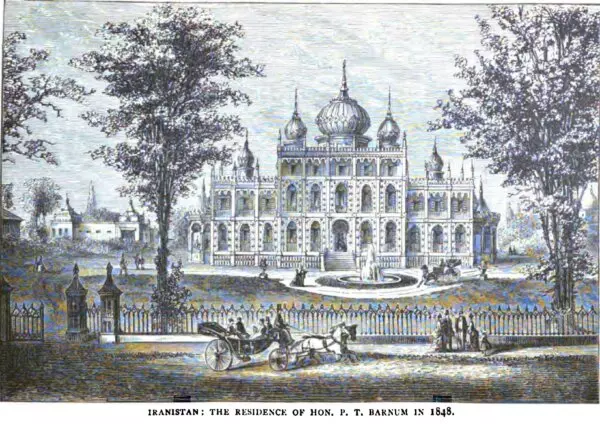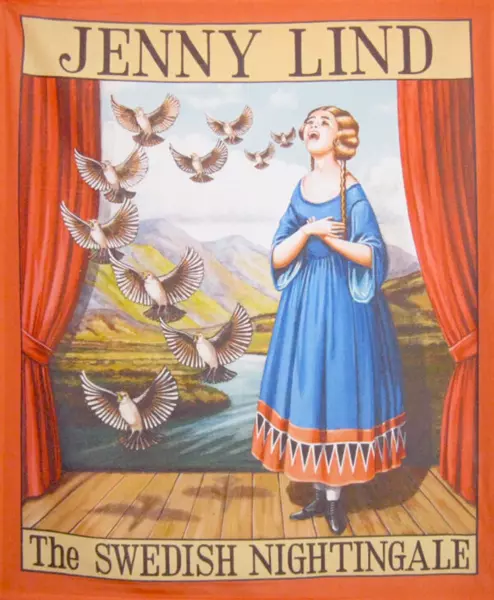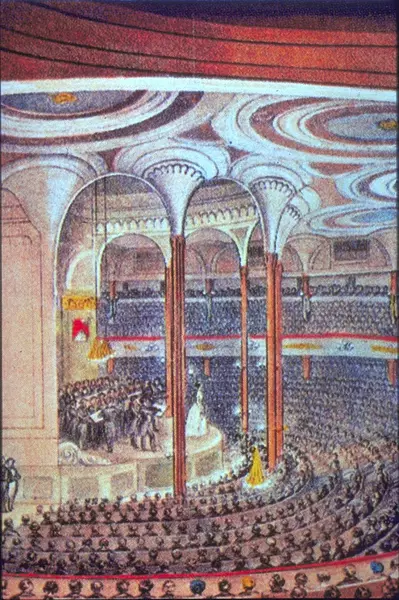At just nine years old, a young Johanna Maria Lind stood before a singing master for the Royal Theatre in Stockholm, Sweden. As she began to sing, the teacher was moved to tears by the beauty and power of her young voice. Recognizing her extraordinary talent, Lind was awarded a scholarship to become a student at the prestigious Royal Dramatic Theatre where she would study acting, dancing, and singing as part of her opera education.
In 1833, four years after that initial private performance, Lind performed in twenty-two theatrical productions. As a teenage prodigy, she was quickly on her way to stardom. Her first annual contract came in 1837, but it was her performance of one of the leading roles in Carl Maria von Weber’s “Der Freischütz” at the Royal Swedish Opera in 1838 that truly catapulted her to fame and made her the declared favorite of the Swedish public.
The absurdity of such a claim, or “humbug,” seems preposterous; nonetheless, the wild claims brought crowds and revenue, and ushered in the beginning of Barnum’s collection of curiosities that would go on to captivate the country and the world.
Barnum had an innate sense for how the bewildering could also be lucrative. In 1841, he made another, much larger investment; one that was stationary. For $12,000 (approximately $427,500 today), he purchased the American Museum from Dr. John Scudder Jr.
In 1844, Lind received a request to sing at the coronation of Oscar I at Stockholm Cathedral. That same year also marked the beginning of her international touring career outside of Sweden. Over the next several years, she performed in Germany, Austria, and England. She even spent several months learning German for her performances in Berlin. In December 1844, she sang the lead role of Norma in Vincenzo Bellini’s “Norma” at the Court Opera in Berlin, followed by a performance as Vielka, the lead role, in Giacomo Meyerbeer’s “Ein Feldlager in Schlesien.” During this time, she met Felix Mendelssohn, one of history’s great composers, and the two remained close until his untimely death in 1847.
After her sensational debut in Vienna with “Norma,” the audience was so captivated by her performance that she needed a mounted police escort to leave the theater safely. When she arrived in London in April 1847, she was already known across Europe as the “Swedish Nightingale.” The moniker would prove most fitting for this extraordinary soprano.
Upon making her debut at Her Majesty’s Theatre as Alice in Meyerbeer’s “Robert le Diable,” one reviewer noted that she exceeded expectations. This was the same theater where her final operatic performance took place on May 10, 1849 – an event attended by Queen Victoria who gifted Lind a gem-encrusted nightingale as a token of appreciation for her remarkable talent.
As Barnum’s advertising genius continued to create excitement around the world, “Lindomania” reached its peak in New York City with the opening of his newly renovated “Oriental Palace of America” in November 1848. Lind was preparing for her third season at Her Majesty’s Theatre when she received news of this incredible opportunity to perform in America. This momentous occasion would culminate in what would be called the “Last Operatic Performance of Mdlle. Jenny Lind” on May 10, 1849. Following that performance, Lind announced her retirement from the opera stage.
By the time Lind’s ship sailed into New York Harbor on September 1, 1850, Barnum’s advertising prowess was on full display and “Lindomania” was in full swing. Approximately 30,000 to 40,000 people filled the harbor to welcome Lind. Her first performance was scheduled for September 11 at the Castle Garden, preceded by the Great Jenny Lind Opening Concert Ticket Auction – an event that sold out instantly.
The sold-out show marked the beginning of nearly one hundred performances she would give in more than fifteen cities throughout the United States and Canada during her tour. She also performed in Havana, Cuba. The entire tour generated approximately $700,000 (approximately $28 million today), with each performance generating substantial profits for both Lind and Barnum.
The tour concluded with a final concert held at Irving Hall on September 3, 1852 – an event attended by over 4,000 people who came to bid farewell to the beloved “Swedish Nightingale.” As she left the stage for the last time, Lind had truly solidified her place in musical history as one of the most celebrated opera singers of all time.








